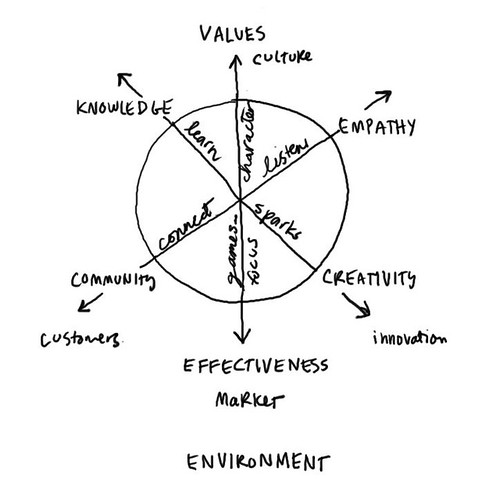Sustainability – defined here as the responsible management of natural resources to create a more robust, independent and environmentally conscious organization – is a pursuit being explored by more and more companies. The challenge for many corporate leaders and managers is how to initiate change in their company’s culture. How do you create such a sea change authentically: something that won’t sound like a gimmick or start with a bang and fizzle out within a brief period of time? Over the years I have seen a pattern to the steps taken by clients who have been successful in creating a corporate culture of sustainability.
Step One: Obtain Managerial Backing
This step is critical – if you can’t sell it to upper management, there’s no use in proceeding. It will end up being undermined and employees will quickly realize it’s not genuine. If the leadership makes it a directive for the company, you will be able to embed sustainability in your corporate mission statement, create a plan and set goals. There are consultants that can help with this, but if you’re a small firm, this can be a manageable task of some research and a few brainstorming sessions with other interested people.
Step Two: Announce Your Vision to the World
This should happen through every medium at your disposal — through your company website (internal and external), e-newsletter, and professional blog. You want to get people talking – whether they are cynics or enthusiasts – and make the new vision synonymous with your company.
Step Three: Delegate Responsibility and Empower the People
The smallest step you can take with the largest, most enduring impact is to make the new priority of corporate sustainability part of an interested person’s job description. I worked with a small food manufacturer that advertised for a part-time “Environmental Coordinator” from within their workforce. A young, enthusiastic, albeit inexperienced person in the packing department was interested and it became a 20% position. Within a short time he had coordinated with a nearby paint company to take the empty 5-gallon containers the food manufacturer had been bringing to a recycler 30 miles away.
As a food manufacturer, they were not allowed to reuse the cleaned containers, and the paint company was buying brand new containers. This joint venture saved the food company the cost of recycling and the 60 mile round trip every week, the paint company got clean containers at a much lower cost, and the environmental cost of producing and disposing of the containers was averted.
It is important for the “Environmental Coordinator” to be empowered to identify opportunities within their department and bring it to a manager that has the authority to prioritize and enact the chosen ideas. It is also important for every person in the company to feel empowered to bring their ideas to these coordinators. This can be done in many ways – anonymous suggestion boxes, an internal website suggestion tab, or a whiteboard in the coordinator’s office – depending on the current culture of the company. It is also advantageous if an Environmental Coordinator can trade ideas and brainstorm with other coordinators on a regular basis. If there are multiple coordinators within one organization, the coordinators from each department could meet regularly to brainstorm, learn from each other and synergize their efforts (reducing costs, gaining support). One company I worked with started a multi-organizational environmental group. The Environmental Coordinators from six non-competing, like-minded companies met on a quarterly basis to trade ideas on issues such as recycling, environmentally friendly suppliers and efficient manufacturing ideas. (Vermont Businesses for Social Responsibility coordinates several such groups.)
Recurring Step: Keep People Informed
Announce your success stories, your current projects, ideas you’ve heard about, and relevant stories from other companies. These stories will reinforce the company’s commitment and celebrate your people. And these days many of these ideas are easy to track and quantify. For example, our company provides bus passes to all employees for free to encourage the use of mass transit for commuting. We can track the emissions savings by how many times an employee requests a new pass and how many miles of driving to work in a single-occupied vehicle this saves them. Our local school started a campaign to reduce the amount of printed material they created and found they don’t require recycling pick up as often – savings that are shown on their monthly overhead costs. Quantifying these savings is important in order to reinforce the significance of the new culture shift towards sustainability, empowering everyone from the CFO to the packer on the production line.
Be the change you want to see in the world
Word of mouth and cultural image are immensely powerful. People listen, judge and act in accordance with what they hear and see happening around them. Tell stories about your ideas and then share what you accomplished. These stories will paint a picture of what your company stands for and this picture will help to create the cultural shift you want to see.
Related articles
- How To Embed Sustainability Into Corporate Culture: A Cheat Sheet (Northern States Solar Services)
- Healthy corporate culture lets strategy execute. Amen. (mcnakblog.com)
- #CORPORATE CULTURE tweet (mcnakblog.com)
- Know thyself: Corporate culture begins with introspection (business.financialpost.com)





